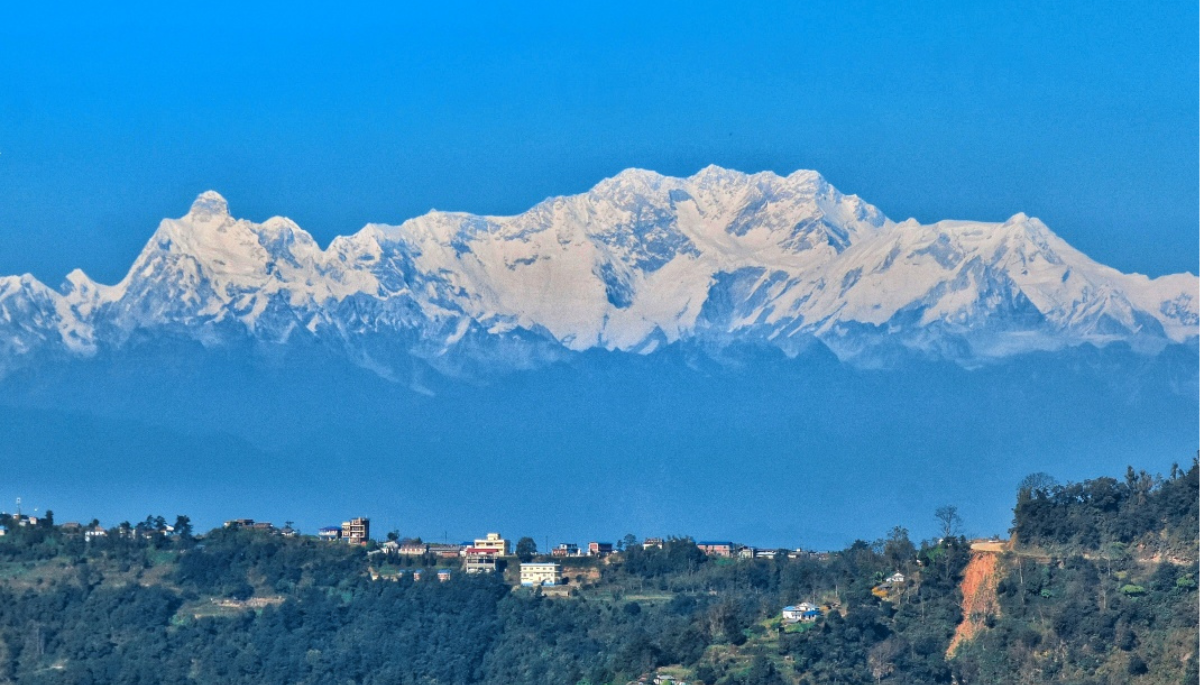Overview
Situated in the far eastern reaches of Nepal, bordering Sikkim, India, Mount Kanchenjunga is the third tallest peak in the world. Often regarded as one of the most challenging mountains to climb, even trekking to its base camp is a dream of many. Kanchenjunga, meaning five great treasures of the snow, is a series of five peaks towering over 8,000 meters. The Kanchenjunga was considered the tallest peak in the world until 1852, when the Great Trigonometrical Survey of India took place. This trek takes you through a dramatic mix of rugged trails, dense forests, alpine meadows, and ancient local villages influenced by the Tibetan region of China.
This trek is among the most underrated, with few people on its trails. Considered one of Nepal’s most strenuous treks, very few dare to complete it. Far less crowded than its other Himalayan counterparts, this trek is among the most thrilling. With unrivaled views of Kanchenjunga, this trek promises to be an unforgettable journey. In this article, let’s look into this fascinating trek in detail.
Some Important Info Of The Kanchenjunga Base Camp Trek:
- Trek’s Maximum Elevation: 5143 meters
- Trek’s Duration: 15-20 days
- Trek Difficulty: Strenuous
- Location: Taplejung District, Far Eastern Nepal
- Best Season: March-May
Some Important Highlights:
- Remote Untouched Beauty: If you choose to trek in this region, be well prepared, as you will be walking through some of the most remote parts of Nepal. This trek will surely fascinate trekkers with its unique landscapes and rural feel. People seeking solitude can embark on this beautiful trail.
- Mountain Scenery: The trek offers breathtaking views of Kanchenjunga and other surrounding peaks, making it one of the most picturesque treks in Eastern Nepal. Multiple viewpoints along the way provide stunning Himalayan scenery. On clear days, you can also glimpse Everest from this trek.
- Wide range of Flora and Fauna: The Kanchenjunga Conservation Area has many different species of animals and plants. The elusive snow leopard and the rare red panda can also be seen on the trails. These animals prefer colder climates, so they are seen in regions with elevations over 4500 meters.
- Challenging and Rewarding Terrain: The trail to the Kanchenjunga base camp is one of the most treacherous. However, it is among the most rewarding, with majestic scenery and crisp, fresh air.
- Explore age-old monasteries and temples: During this trek, trekkers can witness many temples reflecting the region’s history and religion. After visiting these temples, people can learn various things.

How To Reach Kanchenjunga Base Camp
First Step: Getting To Taplejung (bus/flight)
The first step in reaching the Kanchenjunga Base camp is to reach the Taplejung district. For this, you have two alternatives: fly from Kathmandu to Bhadrapur. Once you reach Bhadrapur, you can take a bus to Taplejung, which takes around 7-8 hours. Another alternative is to take a bus directly from Kathmandu to Phidim, Taplejung. This lengthy bus journey will take 17-19 hours. Most people prefer flights to save time. Once you reach Taplejung, the next phase of your trek begins.
Second Step: Taplejung to Kanchenjunga Base Camp (trekking)
Reaching the Kanchenjunga Base Camp from Taplejung will take more than 10 days. You can choose either the north or the south base camp of Kanchenjunga. Most trekkers prefer to complete the entire circuit of Kanchenjunga, which takes more time and is too strenuous. In the first five days of your trek, you’ll cross villages like Chirwa, Sekathum, and Amjilosa and eventually reach Ghunsa. You can stay at Ghunsa for acclimatization. On the sixth day, you will head towards the Kanchenjunga Base Camp. The journey is challenging from now on, and proper acclimatization is required. You can explore the amazing Kanchenjunga Base Camp for a day.
After 10 days of trekking, you can return to Sekathum. The descent is not challenging and can be leisurely completed. From Phidim, you can either travel to Bhadrapur by bus or take a flight back to Kathmandu. You can also take a bus directly from Phidim to Kathmandu.
Some Practical Information
Accommodation
Due to its remoteness, you may not find it very luxurious, so you must sometimes adjust. As you ascend, the tea houses get more and more scarce. For the first half of the journey, you will enjoy spacious lodges and hotels. But as you approach the base camp, the tea houses get less, and you may have to camp at various times.
Best Time To Visit
Spring and Autumn are the best times to visit this place because of clear skies and mild temperatures. Avoid winter and monsoons, as the weather can get pretty harsh. The trails are harder to navigate, and the views are obstructed.
Also Read: Where Faith And Nature Unite: Pathibhara Temple Trek


0 Comment